CMMC Practice AC.L1-3.1.20 – External Connections: Verify and control/limit connections to and use of external information systems.
Links to Publicly Available Resources
This document provides assessment guidance for Level 1 of the Cybersecurity Maturity Model Certification (CMMC). This NIST Special Publication provides information to organizations about firewall technologies and policies. This NIST Special Publication offers recommendations for designing, configuring, and managing IPSec VPN solutions. This is a sample policy from Norfolk State University. This practice is intended to address policy and procedures for the use of external information systems in regard to access and information handling. This SANS whitepaper describes firewall and perimeter protections. This SANS whitepaper discusses the need for web application firewalls. In this edition of the On Call Compliance Solutions Compliance Tip of the Week, we discuss how organizations must establish terms and conditions for the use of external systems in accordance with organizational security policies and procedures. Those terms and conditions must address as a minimum, the types of applications that can be accessed on organizational systems from external systems. Let’s talk about NIST 800-171 Control 3.1.20 -- Encrypt CUI on mobile devices and mobile computing platforms. In this edition of the On Call Compliance Solutions Compliance Tip of the Week, we discuss how organizations must establish terms and conditions for the use of external systems in accordance with organizational security policies and procedures. Those terms and conditions must address as a minimum, the types of applications that can be accessed on organizational systems from external systems.
Discussion [NIST SP 800-171 R2]
External systems are systems or components of systems for which organizations typically have no direct supervision and authority over the application of security requirements and controls or the determination of the effectiveness of implemented controls on those systems. External systems include personally owned systems, components, or devices and privately owned computing and communications devices resident in commercial or public facilities. This requirement also addresses the use of external systems for the processing, storage, or transmission of FCI, including accessing cloud services (e.g., infrastructure as a service, platform as a service, or software as a service) from organizational systems.
Organizations establish terms and conditions for the use of external systems in accordance with organizational security policies and procedures. Terms and conditions address as a minimum, the types of applications that can be accessed on organizational systems from external systems. If terms and conditions with the owners of external systems cannot be established, organizations may impose restrictions on organizational personnel using those external systems.
This requirement recognizes that there are circumstances where individuals using external systems (e.g., contractors, coalition partners) need to access organizational systems. In those situations, organizations need confidence that the external systems contain the necessary controls so as not to compromise, damage, or otherwise harm organizational systems. Verification that the required controls have been effectively implemented can be achieved by third-party, independent assessments, attestations, or other means, depending on the assurance or confidence level required by organizations.
Note that while “external” typically refers to outside of the organization’s direct supervision and authority, that is not always the case. Regarding the protection of FCI across an organization, the organization may have systems that process FCI and others that do not. And among the systems that process FCI there are likely access restrictions for FCI that apply between systems. Therefore, from the perspective of a given system, other systems within the organization may be considered “external” to that system.
Further Discussion
Control and manage connections between your company network and outside networks. Outside networks could include the public internet, one of your own company’s networks that falls outside of your CMMC Assessment Scope (e.g., an isolated lab), or a network that does not belong to your company. Tools to accomplish include firewalls and connection allow/deny lists. External systems not controlled by your company could be running applications that are prohibited or blocked. Control and limit access to corporate networks from personally owned devices such as laptops, tablets, and phones. You may choose to limit how and when your network is connected to outside systems or only allow certain employees to connect to outside systems from network resources.
